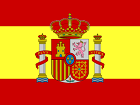International logistics
There are various reasons for the movement of goods between countries, most of which of course increase the value of the goods. With the rapid development of e-commerce, a large number of small businesses now require international shipping, here is an attempt to explain the different steps in the shipping of goods.There are many players involved in international shipping, shipping companies, booking agents, freight forwarders, customs brokers; introduce the four main players of LCL shipping: shippers, consignees, freight forwarders and shipping companies.
A shipping company is a company that transports your cargo at sea. You may never talk to them or even see their documents or letters.
However, the freight forwarder is the logistics provider you will be dealing with. They can arrange shipping from shipper to consignee - you are one of them. The shipper is the shipper at the origin; it can be you or the factory or seller from which you purchased the product. The consignee is the recipient of the goods; this in turn could be you or the person you are selling the product to. Five physical steps and two documentation steps in international shipping:
There are five physical steps and two documentation steps that must take place for every shipment in the transit of goods from shipper to consignee. Each step has an associated cost that must be resolved by someone (usually the shipper or consignee). If you want to avoid cost surprises and unnecessary delays in your supply chain, make sure you clearly agree on who pays for each of these 7 steps each time you book a shipment. Seven steps of international shipping: export hauling, origin handling, export customs clearance, ocean freight, import customs clearance, destination handling and import hauling.
When in doubt, review the contract between the shipper and the consignee. In the case of a sale of goods, the transfer of responsibility for the goods is usually agreed in the contract, which will also be the source of determining who pays what.
1. Export Shipping
The first part of shipping is export shipping. This involves the movement of goods from the shipper to the forwarder's premises. For cargo that is less than a container load, the freight forwarder's premises is always the export consolidation center (origin warehouse), where the freight forwarder has its own personnel or designated agents. Goods are usually transported by road (by truck), rail or a combination. If the shipper is agreed to be responsible for this part of the shipment, it is usually arranged through the local shipping company. However, if the consignee is in charge, it usually makes the most sense to use a freight forwarder that can provide export haulage as part of the international shipment.
Handling the cargo (loading onto a truck) at the shipper's premises is not considered part of the export shipment, as unloading the truck at the freight forwarder's premises is generally not part of the export shipment.
2. Export customs clearance
For every shipment leaving a country, customs formalities must be completed to meet regulatory requirements. Customs clearance is a transaction in which a declaration is made and the required documents are presented to the authorities and can only be carried out by companies with a valid customs license (so-called customs brokers).
Export customs clearance can be done by a freight forwarder with a valid license or an agent designated by the freight forwarder. Alternatively, it can be performed by a customs broker directly appointed by the shipper who is not necessarily involved in any other part of the shipping process. The export clearance steps must be completed before the goods leave the country of origin, if not done by the freight forwarder, usually before the goods enter the freight forwarder’s warehouse of origin.
3. Origin processing
Origin handling covers the physical handling and inspection of all shipments from receipt at the origin warehouse to loading on a container ship. Many different parties go through many steps under origin processing, but all are coordinated and responsible by the freight forwarder or an agent appointed by the freight forwarder. In short, when a cargo is received, it is inspected (tally), planned to be loaded, combined with other cargo, loaded into a container and moved to a port, where it is loaded onto a ship.
While in the end it is always the freight forwarder that does the origin processing, it can be paid by the shipper or the consignee regardless of who actually buys the freight forwarder. For example, if the consignee decides to use Forwarder A for an import shipment and agrees with the shipper that the shipper must pay the origin fee, the shipper also automatically purchases the origin fee from Forwarder A. This situation creates some friction if the shipper believes that the price processed at origin is not at market level, as they are forced to use forwarder A in this case.
4. Shipping
The freight forwarder decides to choose a shipping company to perform the ocean freight from origin to destination to meet the schedule required for the shipment. A freight forwarder has a contract for container carriage with a shipping company, in which case the shipper or consignee does not have any direct interaction with the shipping company.
Shipping costs are ultimately borne by the shipper or consignee. However, ocean shipping is never the full cost of shipping from port to port. There are various surcharges levied in the industry, such as fuel adjustment factors and currency adjustment factors, which are passed on to the shipper or consignee.
5. Import customs clearance
Import clearance can usually begin before the goods reach the destination country. As for export clearance, it is the process of making a declaration and submitting it along with the relevant documents so that the authorities can register the goods and collect any duties. Import customs clearance shall be handled by the forwarder or the agent of the forwarder, or the customs broker designated by the consignee.
Import clearance procedures must be completed before the goods leave the bonded area of the destination country. Usually, this means before the goods leave the freight forwarder or the freight forwarder's destination warehouse.
6. Destination processing
As for the origin, the goods also need to be loaded and unloaded at the destination before they can be released to the consignee. In a nutshell, destination handling involves moving the container from the ship to shore, from the port to the freight forwarder's destination warehouse. It also includes unloading the container and preparing the cargo for pickup by the consignee. Trucks used to transport LCL cargo. Destination processing includes multiple destination charges and is always performed by the freight forwarder or the agent designated by the freight forwarder. A fee can be charged to the shipper or the consignee, but payment in full is always required before the goods are handed over to the consignee. Likewise, if the agreement is that the shipper pays the ocean freight and the consignee pays the destination fee, it is actually the shipper who decides who the consignee has to buy destination processing from. As discussed for origin fees, this can create some friction or surprises for unplanned recipients.
7. Import transportation
The final stage of transportation is the actual delivery of the goods to the consignee. It can be performed by the freight forwarder or the local shipping company designated by the consignee. If this part of the shipment is arranged by the shipper, it often makes sense to use a freight forwarder who can also arrange import shipments. Import shipping usually includes shipping to a specific address, but does not include unloading from a truck, which is the responsibility of the consignee.

 English
English Spanish
Spanish Arabic
Arabic